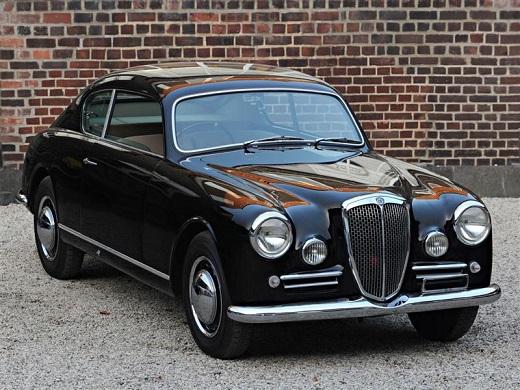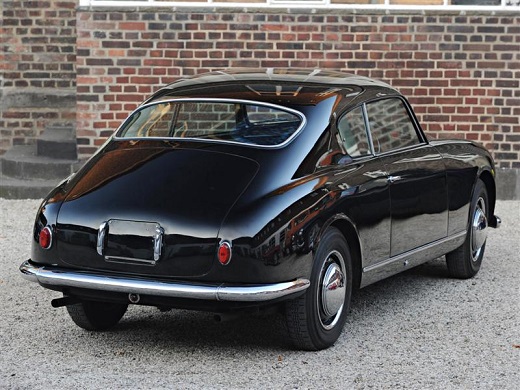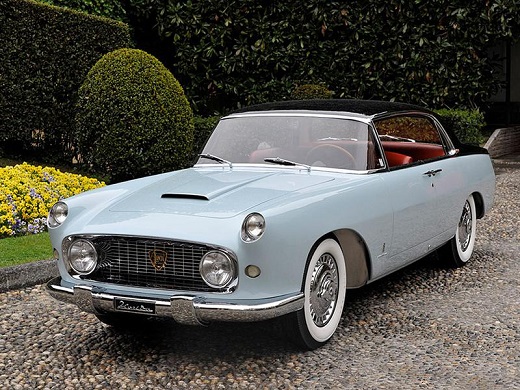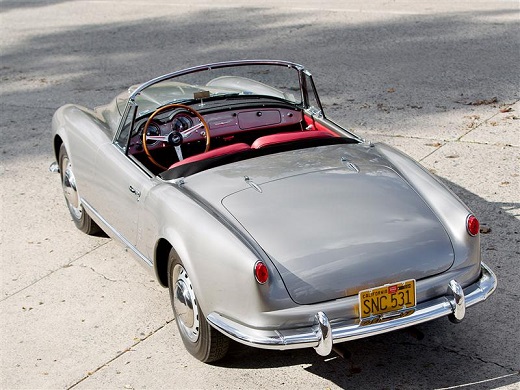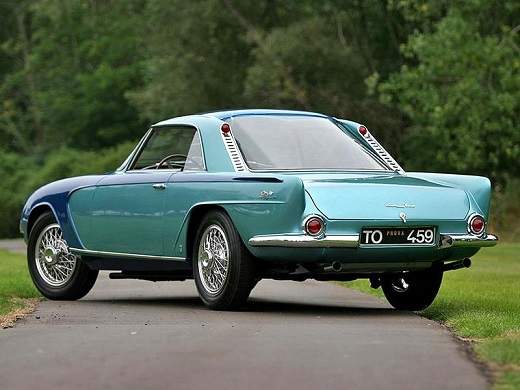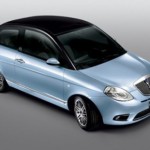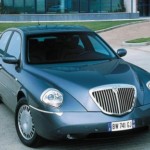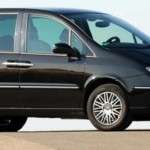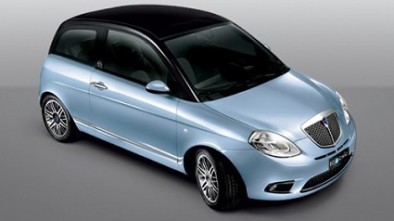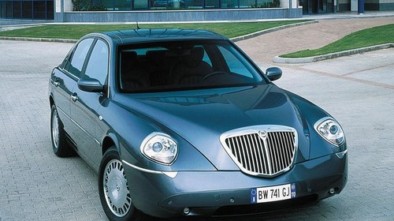Lancia Aurelia (1950 - 1958) - Model history
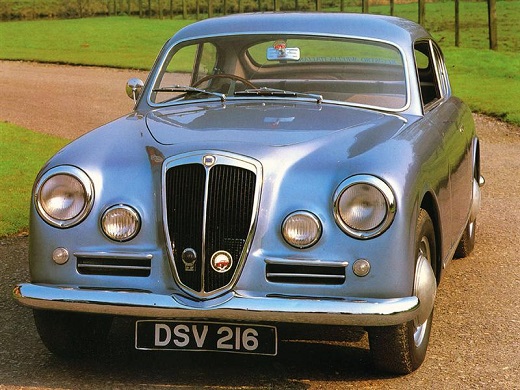
Lancia Aurelia
In the early XNUMXs, Italy continued to struggle with the echoes of war and the enormous political and social problems created by the years of destruction and dictatorship.
Under such social conditions, no one expected the breathtaking and captivating cars from the Apennine Peninsula, both with their technical solutions and the sheer beauty of appearance. Just like this car is the famous Lancia Aurelia, which is another masterpiece on wheels, no matter from what angle it is viewed. When she saw the light of day and the face of the public in 1950, she was able to show in the best possible way that the famous Latin spirit was very much alive and nothing could destroy it. The story of this car pearl begins in the early forties when Francesco De Virgilio, a Lancia engineer and V6 engine specialist, was ordered to begin the development of a new engine. Although the first prototype of the V6 engine was soon over, major vibration and balancing problems worried the designers.
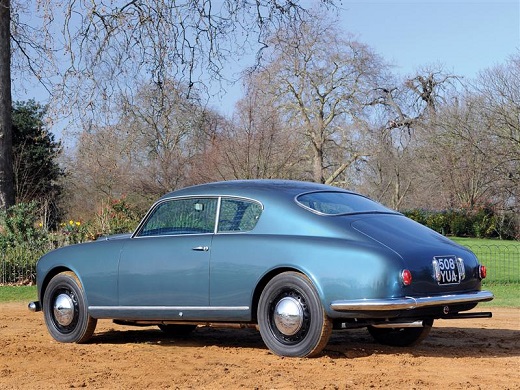
Lancia Aurelia
The solution was found in increasing the angle between the cylinders from the initial 39 to 45 degrees. However, even though the engine existed, the car he was supposed to be in was not there yet. Only a few years after the end of the war, namely in 1947, Lancia returns to the forgotten V6 project. This time, the team is led by "genius", Vittorio Jano, a fantastic engineer who later gained fame in Ferrari and which, after long examination, accepts a 60-degree angle as the definitive solution. The version of the aggregate developed by Jano was extremely advanced at the time. Specifically, the complete block and engine heads were of aluminum while the pistons were of steel. Given the production methods and technology, the production of this unit was very difficult and demanding. The first prototype of the new model, called Aurelia, goes out for testing in the same year, but the first production specimens will be unveiled three years later.
Meanwhile, other aspects of the car are being worked on. The desire for technical perfection and uniqueness did not leave the constructors even when creating the Aurelie platform, so this model had independent suspension on both axles (back, excellent, De Dion solution), while the transmission and differential shared the same housing on the rear axle, which is extremely contributed to vehicle balance and weight distribution. The company's management decided to make the new model a coupe, but with specific features, that is, to offer its passengers plenty of space in the cabin as well as in the boot, to be easy to drive and fast. There is probably little who can believe, that this decision by the people of Lancia will create a new class of car called the Gran Tourismo, whose spear Aurelia first and true representative.
Admittedly, cars of these qualities have existed before, but the Lancia Aurelia was the first to combine them all in one place, evenly distributed and cover them with a body that became a classic as soon as it was created. Those lines, which later became eternal, are the work of the famous Batista Farnie, called Pininfarina, although a number of Lancia Aurelia will also have the payment of other design houses. In addition to being the first GT car, the Lancia Aurelia was also the first model to be powered by a V6 engine. As already mentioned, in 1950 the new Lancia was officially introduced. The factory was overwhelmed with orders at the moment, despite the extremely high price. The customer category of this model was clearly defined, wealthy European industrialists, situated playboys, the remaining aristocracy and racing drivers.
The first models were known as the Series 1 (designation B10) which had a 6-liter V1.8 engine and 56 hp. The following year, the 2 Series (designation B21) was introduced, which had an engine of 2 liters and 70 hp, while in 1952 a sedan (with four doors) was introduced, which developed 90 hp, but this model is uninteresting for Aurelia fans. because it is not a coupe, it is not exclusive and fast, and its production is higher. When dealing with this model, a huge problem is the fact that the Lancia Aurelia was produced in as many as 15 versions and in 6 series. Certain models are made as coupes, convertibles, spiders or sedans. In addition, things get even more difficult when it is known that customers could only get a chassis with an engine from the factory, and a body from a design house of their choice. There were coupes of all series (and engines) and their basic shape is almost identical, while the differences between the series and the year can be seen in the details.
Of course, the body versions are all specific and unique. However, in a sea of different versions, series and bodies, the most famous, the best and the most famous Aurelia is the B24, which is made only as a convertible with beautiful Pininfarina bodywork. It is a model that was introduced in 1954 and was the very pinnacle of the development of this car. Although the Series 1 specimens may have been a little weak, this cannot be said of the B24. The famous V6 grew to 2.5 liters and developed 110 or 118 hp (depending on version). The technical picture was complemented by a Weber 40 carburetor and disc brakes on the front wheels. This evolution is considered to be the most beautiful and best Aurelius, which was also the fastest (200 km / h and eight seconds to 100 km / h). Owing to the not very large but constant popularity with the audience, it remained in production until the summer of 1958, when all of Aurelie's moved to history.
During the eight years of production, exactly 5,411 coupes with the famous name came out of the factory halls, of which only 761 copies of the B24 series convertible (there was a Spyder version - a small windshield and a convertible with a normal windshield). It is interesting that there were two copies of the Aurelia coupe in our country, although this model was very expensive and exclusive and as such did not fit into the socialist and self-governing reality of the former Yugoslavia. A special and glorious chapter of the story about this model are its sporting successes. Namely, immediately after the presentation, Lancia Aurelia proved itself on the track at home, in the famous Mille Miglia race in 1951. Given the technical "layout" of this model, it is clear why its drivers were most often seen on the winning podiums, around the world, during the fifties. In addition to this victory, there were famous triumphs at the Sicilian race Targa Florio (1951), at Monza (1955) as well as at the Le Mans class (1951), which was the best response to critics who claimed the revolutionary V6 was unreliable and untested. .
Today, all Aurelia are preserved classics and valuable exhibits of the history of motoring. The most exceptional price is the B24 series, while all coupes have a specific value. In addition to its mere material value, this car is also important as part of the Italian recovery that has instilled in the nation self-confidence and faith in its industry. Thanks to this model and the interest shown by the automotive world, Italy continued to create "diamonds" on four wheels and thus created fashion and changed the face of the industry until the end of the twentieth century. The Aurelia B24 was a very Sikh car at the time, and it gained special popularity when it appeared in the famous film "Et dieu… Créa la Femme" (And God created a woman), with Bridget Bardo.
Author: 426 Hemi
Pictures: Lancia
Retrieved from: www.brzabrzina.com
Recommendation of similar texts:

Hi there, I am Mladen and I am an auto enthusiast. I started this blog years ago to help like minded people share information about latest cars, car servicing ideas, used car info, exotic cars, and auto technology. You will find helpful articles and videos on a wide variety of cars - Audi, Mercedes, Toyota, Porsche, Volvo, BMW and much more. Ping us if you have anything cool to share on latest cars or on how to make older cars more efficient, or just want to say hi!

